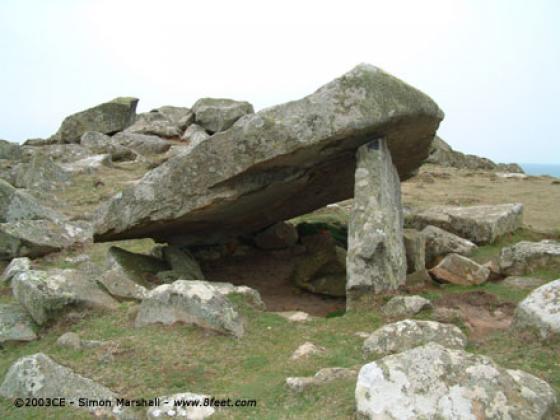I can’t believe I’m the first person to list this site. It’s in such a megalithically rich region I felt sure other stones tourers would have visited – how can anyone stay away with a name like this?
Indeed, as we started our tour at Mynydd Preseli and are now here, by my calculations that makes it an Elvis-Preseli holiday (rimshot, cymbal, thankyou).
Located on a public footpath through St Elvis Farm, this is an utterly extraordinary site – two cromlechs side by side. Both are damaged, the east side of the eastern cromlech has been drilled to hang a gatepost in the past, and both capstones lie on the floor of the chambers, but enough of the components remain to give a tremendous sense of the monument.
A clear mound of cairnstones rises up around the base. On the presumption that it was originally covered, it must have been by a single mound.
The nearby wall contains stones possibly removed from the cromlech.
Unusually for West Wales cromlechs, the site has no sea view, being on a north-west facing slope just over the crest of the hill from the epic clifftop view south over St Brides Bay a few hundred metres away.
The landowner is now the National Trust, so the cromlech is fenced off to protect it from livestock and has a little info board.
The folklore and power here is strong. According to the present farmer, a few metres away stood the parish church of St Elvis (last wedding 1820, last funeral 1850). Just beyond the site of the church before the farmhouse is an ancient well, supposed to be used by St Elvis to baptise St David. A pagan site usurped by a Christian one, yet the Christians have gone and the older stones remain.
visited 23 Aug 04

































































